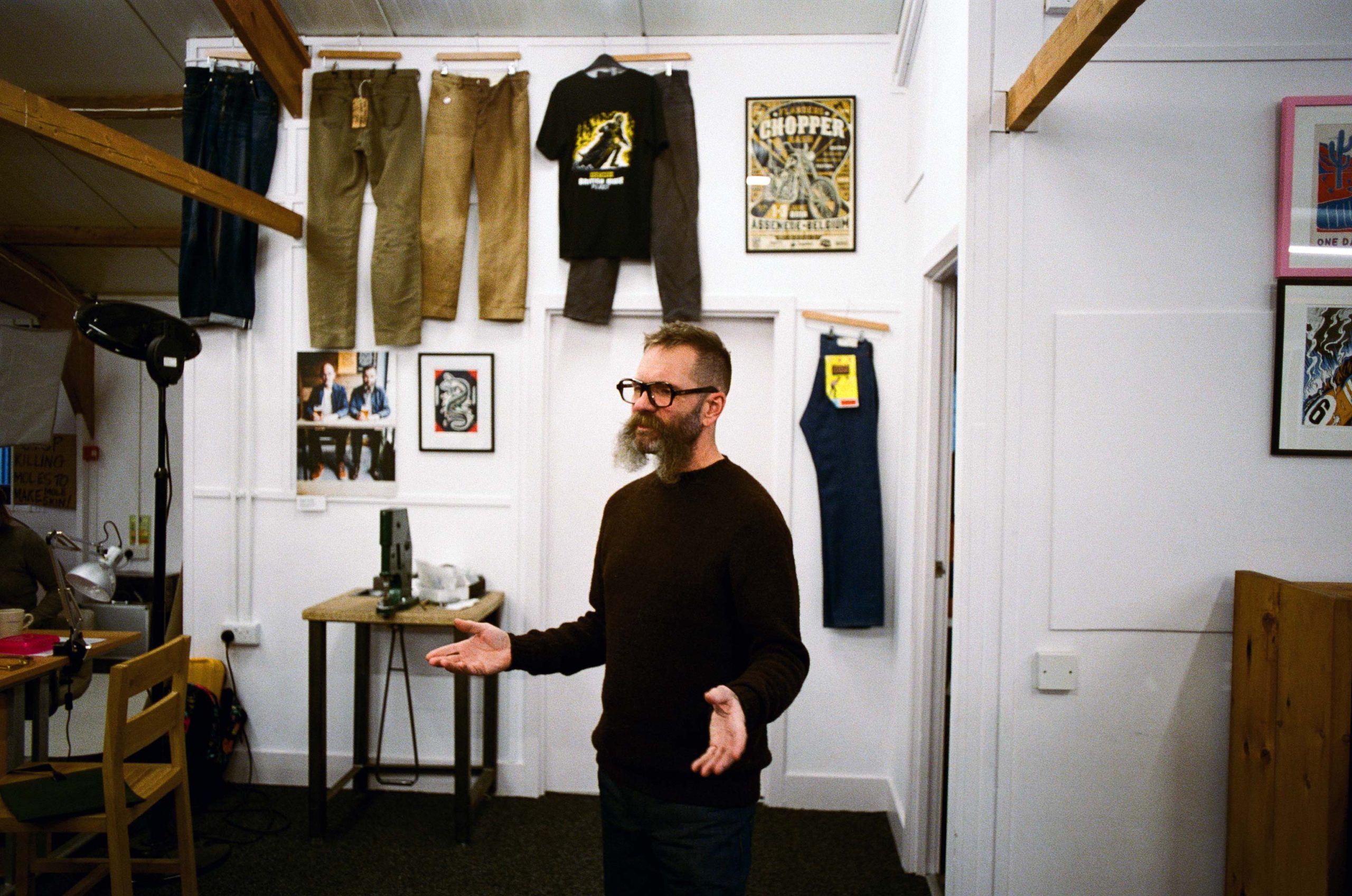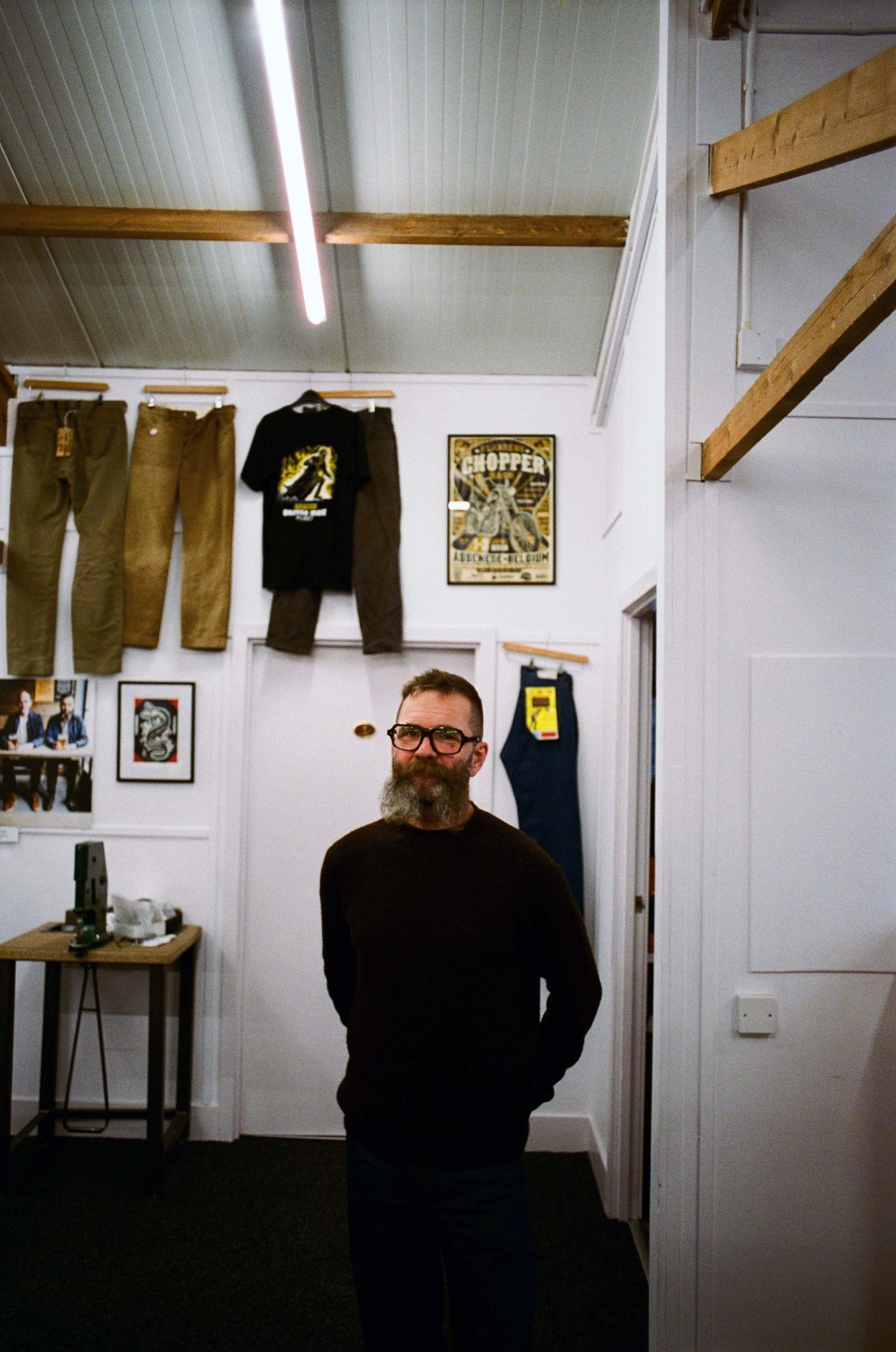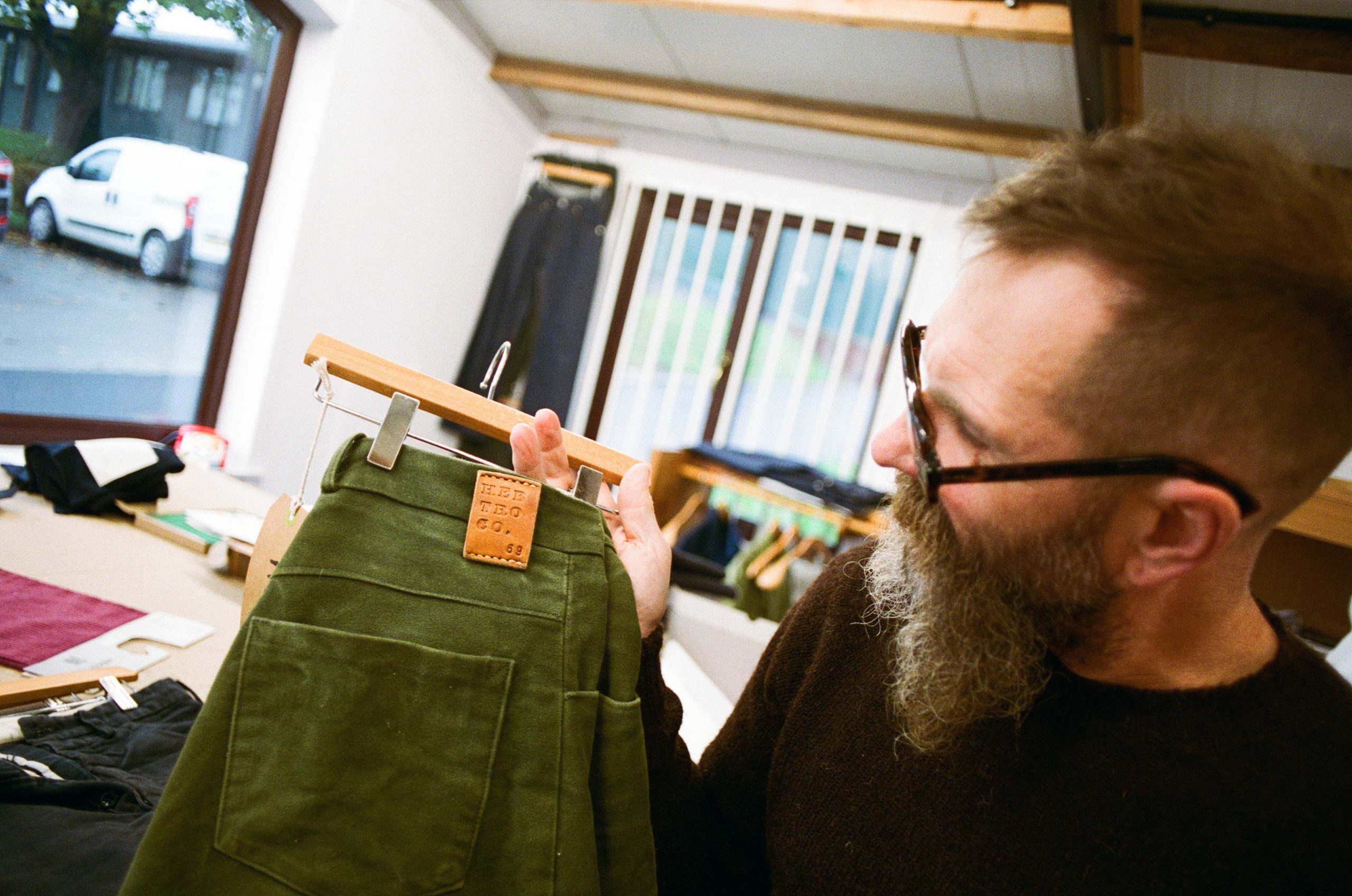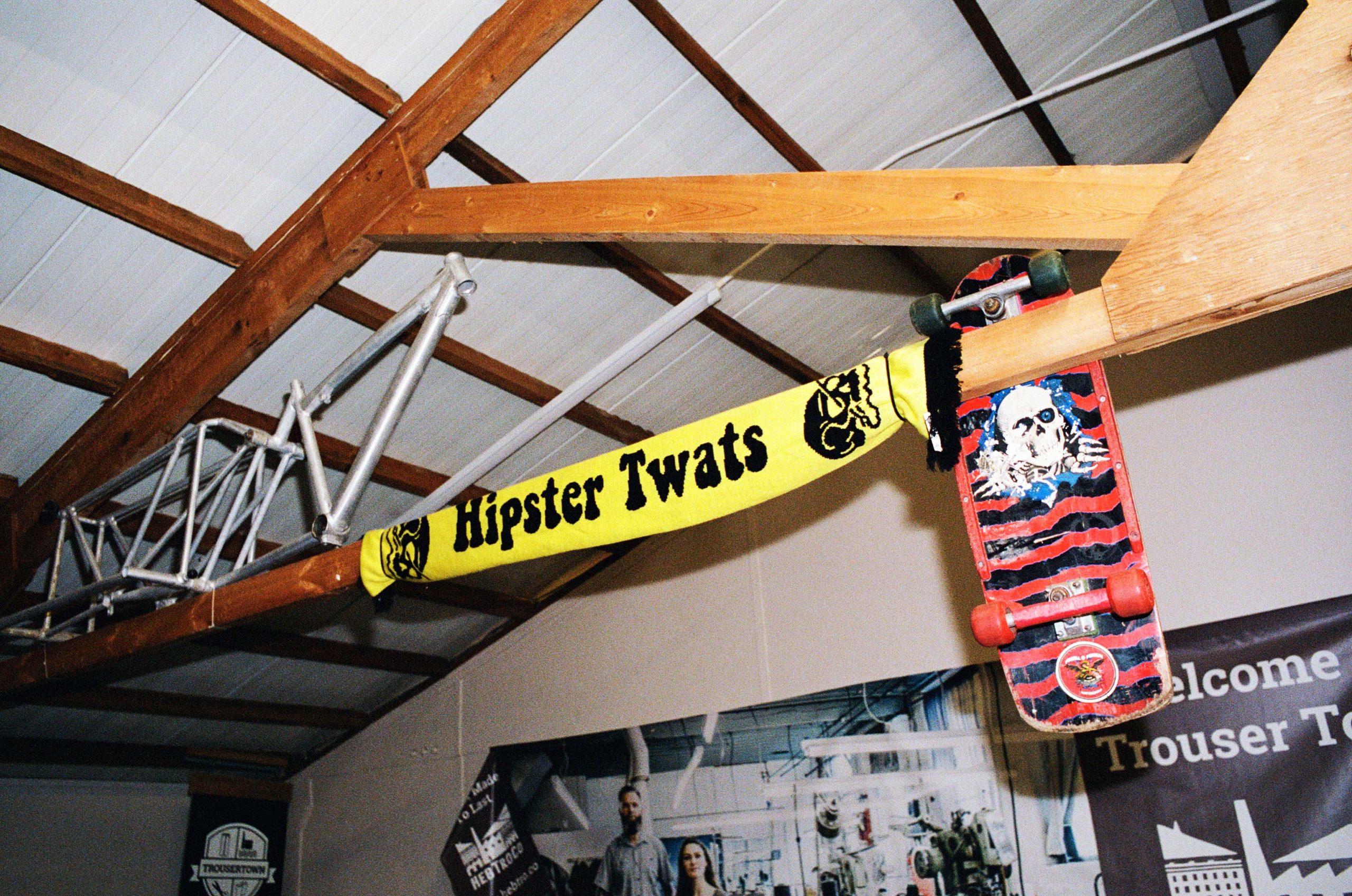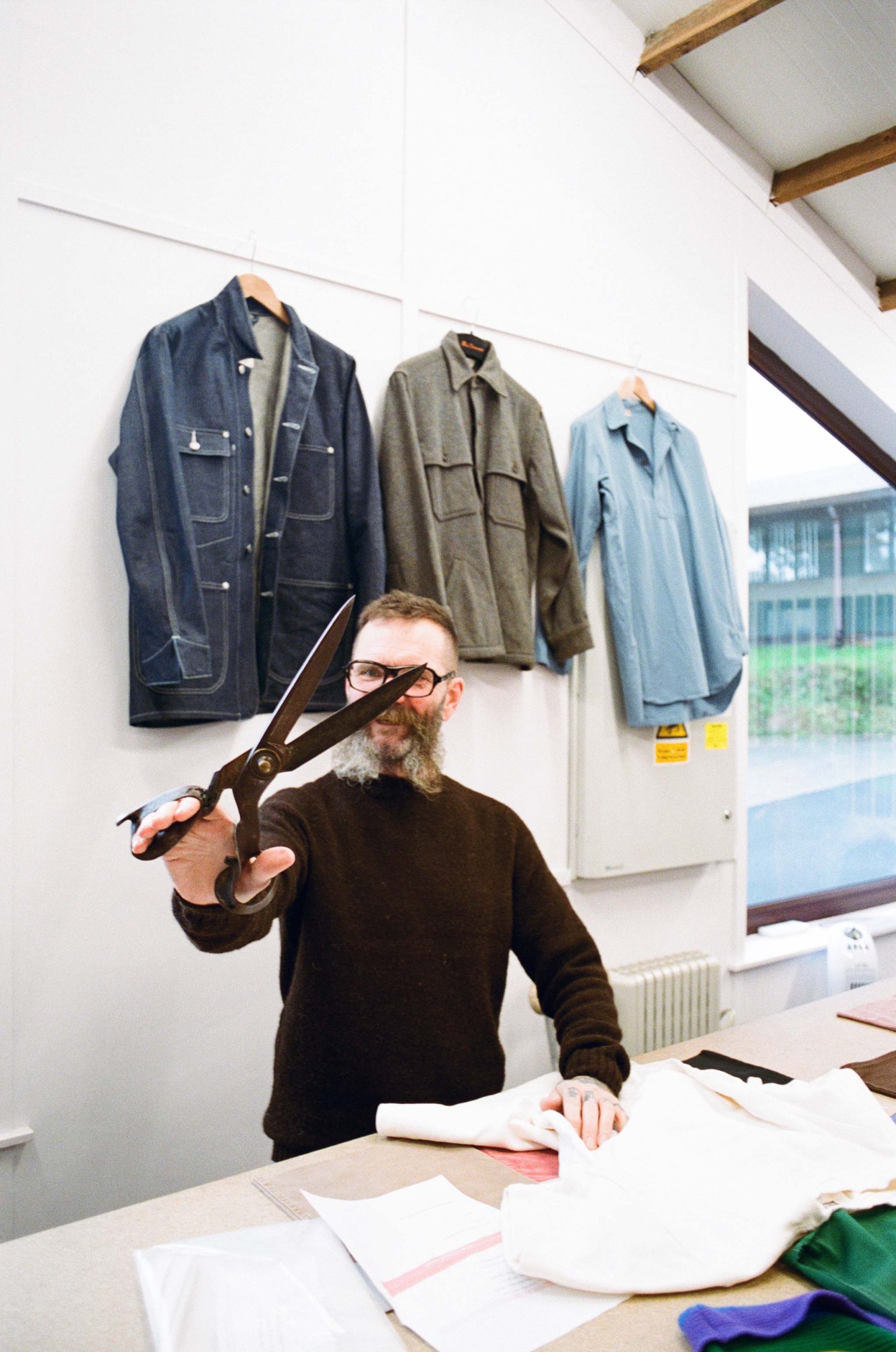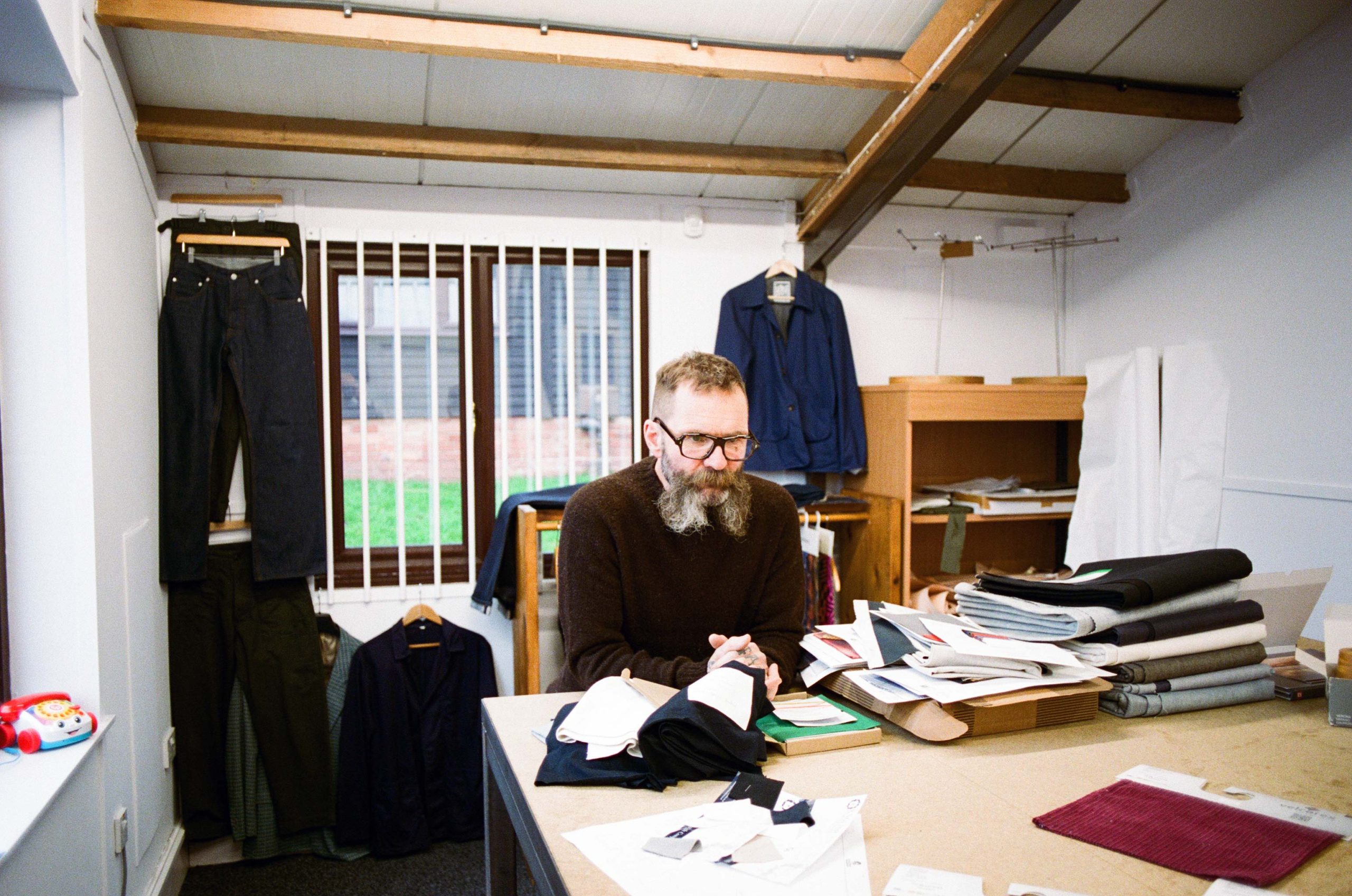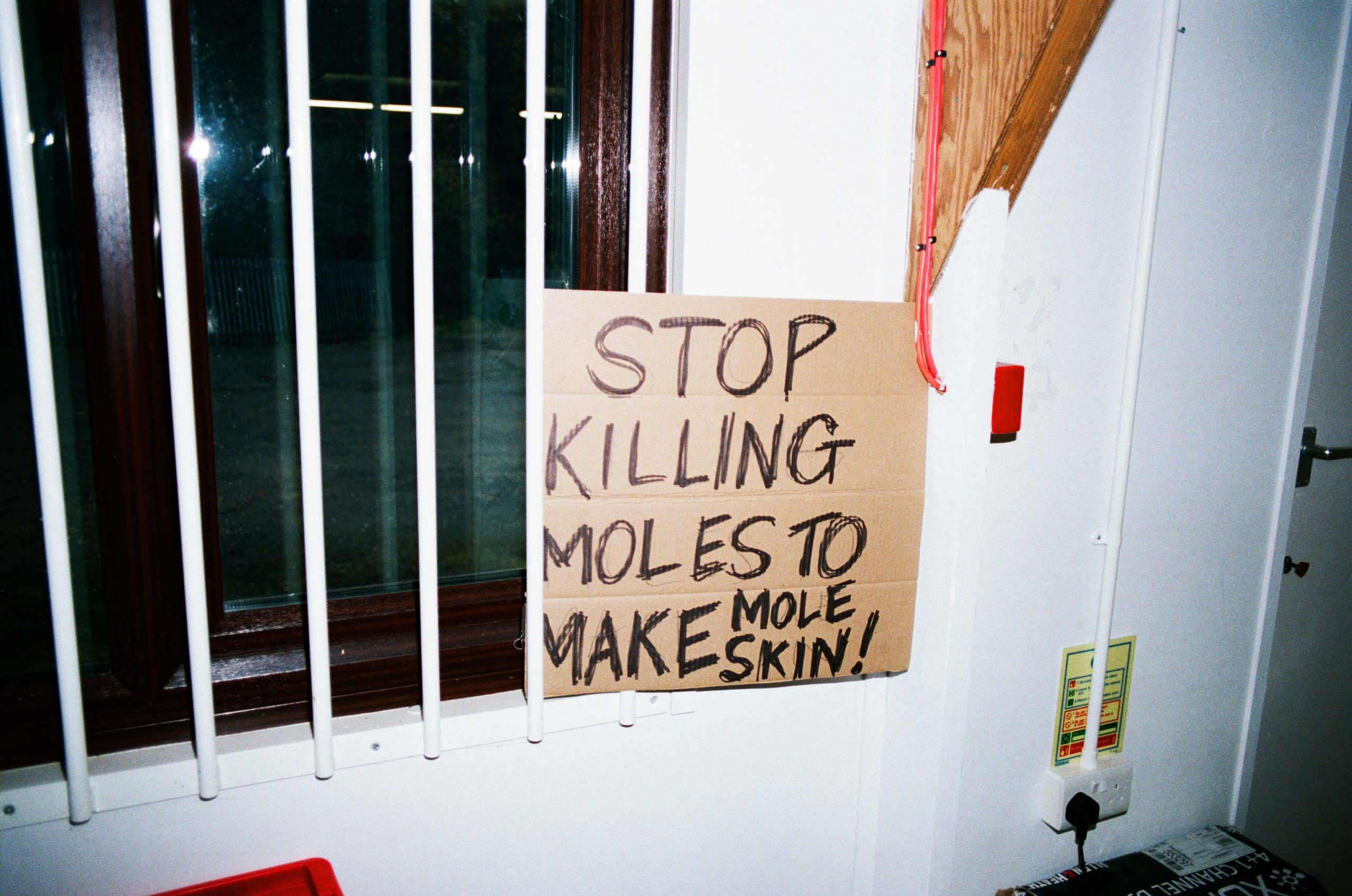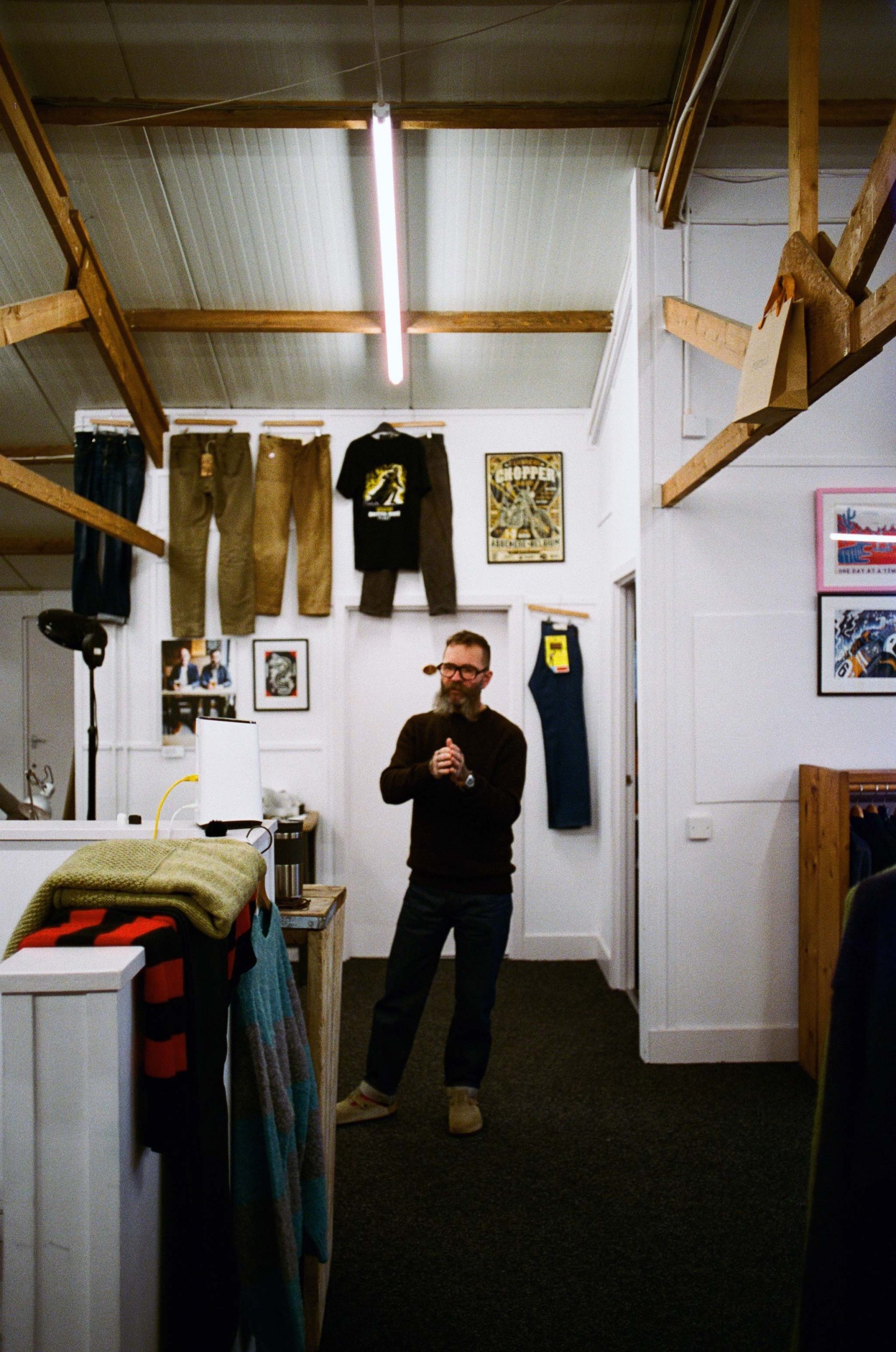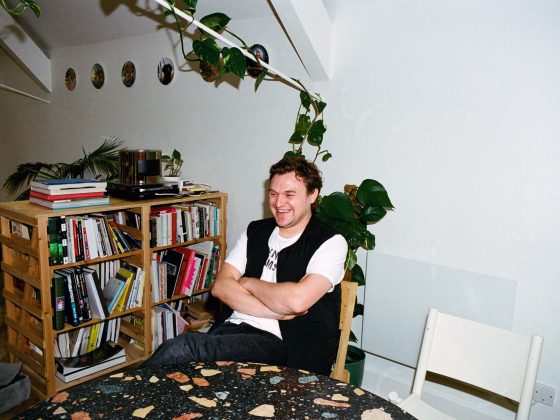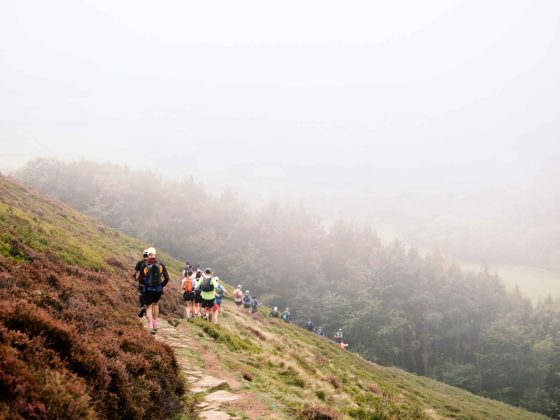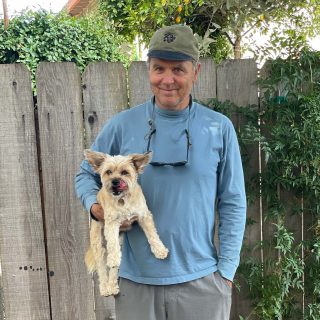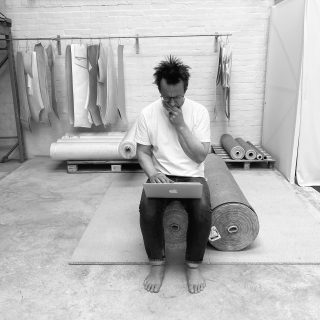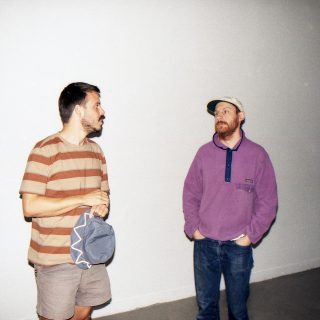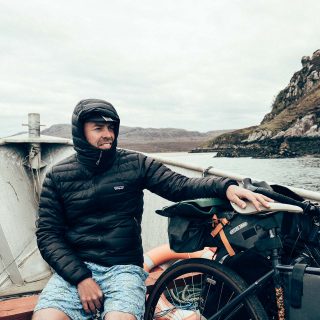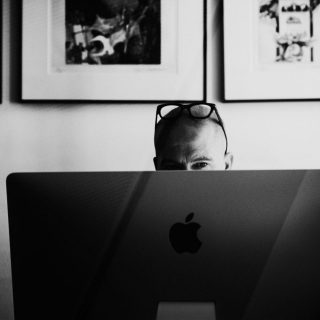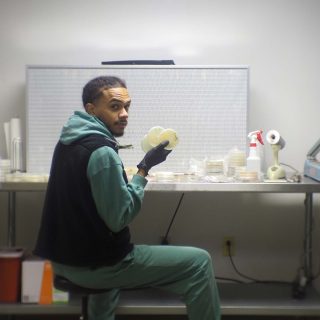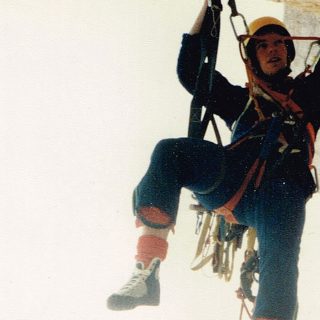An Interview with Ed from HebTroCo
Talkin’ trousers with the HebTroCo co-founder
A lot of ideas were formed in the pub—but not many make it past the hangover. HebTroCo is a rare exception to the rule, and whilst it might have started out as a pint-fuelled conversation between friends Ed and Brant about trying to make some trousers in the Yorkshire town of Hebden Bridge soon spiralled far beyond a boozed-up chat—selling out their first run of moleskin jeans in a matter of hours.
Nearly eight years on, HebTroCo sells a lot more than just trousers—crafting everything from military-inspired smocks to hand-made leather wallets. But whilst they might have expanded beyond the legwear realm, they’ve still stuck firmly to their original ethos, producing high-quality, interesting clothing, all made in Britain.
We took a trip to their very own repurposed chicken shed in the Calder Valley to find out more…
If my research is right, the idea for HebTroCo came about in a pub back in 2015. What was the spark that set it off?
We had the idea for HebTroCo on the 2nd of December 2015. We have that down in our calendar as World Trouser Day. There must have been a lot of ideas that started in pubs over history, but they often don’t lead to anything—but for some reason we were really taken with the idea of making trousers in this country at a level of quality.
What were you doing before all this? You both worked with bikes didn’t you?
We had no experience with clothing at all, apart from wearing it all our lives. Brant was a bicycle designer, and he also sourced components to build bikes—he pioneered online direct-to-market for bikes. I was a mountain bike skills coach and guide, trying to give people a good fun day out on bikes, without killing them. I was always self promoting, making videos and using social media from early on, and he was my first sponsor. We used to go drinking a lot together. It was Brant who had the idea of making trousers—he’d discovered there was a factory that was still making them in Hebden Bridge, which not many people knew about—and it was two minutes walk from his house.
He told me about this because he just wanted someone to go with him and have a look. I’m really suggestible and impulsive—very easily led—so it escalated fast. In the clothing business you get a lot of people who are dreamers, who’ll maybe go to factories but they’ll never put an order in—so when we turn up smelling of beer, he probably just thought ‘here’s another couple of idiots who’ve walked in off the street—here we go again.’ By the time we had a proper look around, we’d had a good couple of pints, so we were pretty buoyant. We bought a pair of trousers each out of the deadstock room, then came back to the pub to tell everyone we were going to start a trouser company.
From the next day, we were on it, because we’d said we were going to do it. It was one of those things where we’d said we were going to do it, so you’ll look like a dickhead if you don’t.
You can’t back down if you’ve told everyone.
I’ve done a lot of different things over the years, but this really took my imagination. There was such a great story—with the history of Hebden Bridge as Trouser Town, which I didn’t know anything about. There was a massive tradition of not just spinning and weaving, but of garment manufacturing—especially trousers—in Hebden Bridge, and there was still a factory clinging on by its fingernails making things. It was like a whole new world.
I liked clothes, but I didn’t really have many good ones as I spent all my time wearing mountain bike clothes, and I was dressed by the industry in sponsored gear. Suddenly I was thinking about fabrics and garments—it was great.
Subscribe to our newsletter
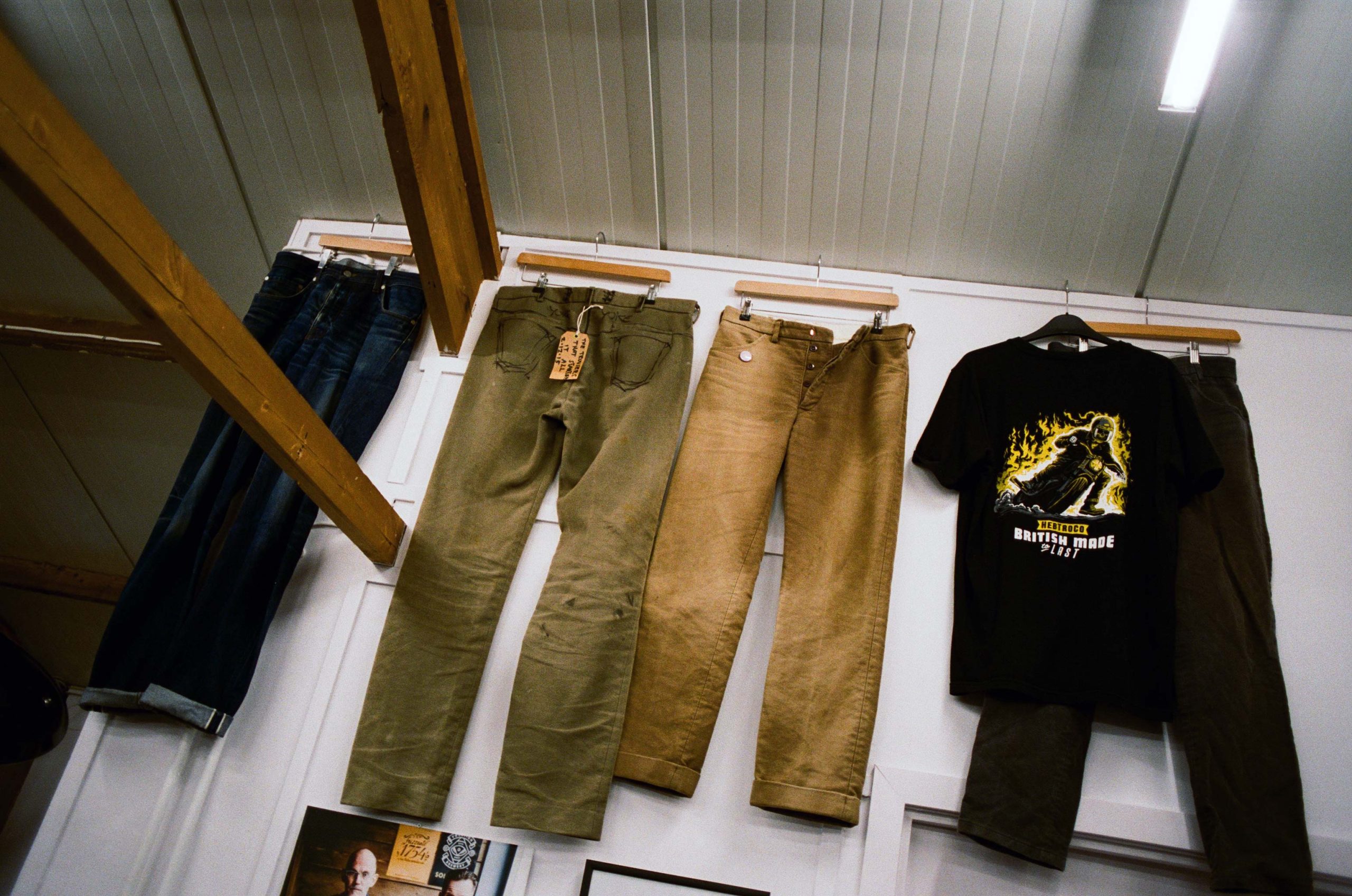
Well, we didn’t have any money, so we did a Kickstarter. I didn’t want to do that thing where it’s like, “Oh, buy us a coffee,” or, “We’ll send you a postcard.” So instead we said, “If you give us £95, we’ll make you a really good pair of trousers.” At the start we were going to do 50 pairs, but I was really fired up about it, and I knew I could sell 50 pairs just going around the pub—so when we found out that a weekly production run in the factory was 176 pairs of jeans, we decided we’d make 176 pairs. With Kickstarter you’ve got a month to get your pre-orders, so we thought we’d do pop-ups and social media, and over that month we’d eventually sell the 176 pairs of trousers, but when we pressed go on the campaign, they all sold within five hours.
So that’s when we realised this idea had legs… to use the great pun. It was shocking that people had bought them. We thought we’d have nothing to do—but then once you’ve had the trousers made, where do you put them? How do you organise the sizes? What happens if the trousers don’t fit? So we had to start a business from scratch. So we just worked on it, building the brand—we sold one model of moleskin jeans in dark navy or grey—and then we added a belt, and then boots, and then a jacket.
A lot of ideas are formed in the pub—but not many get off the ground. What made yours different?
We needed it to work financially. Neither of us had pensions, so it was desperation really. And we were really into it—it felt really good. It was fantastic to dig into the history of the area and into clothing—to want to be able to make something good in this country rather than just rubbish sandwiches. We can actually make things here in Britain—we don’t have to bring back mass industrial scale production, but there are still skills here.
“I think people want something at an identifiable human scale—not a big globalised supply chain where nobody knows where things are coming from, or where they’re made.”
And the customers liked watching it—they enjoyed the story—so it was a buzz. But at the same time, we weren’t stupid with it, and we made it work. Also, it’s really good having two people working on something like this. We’re two very unlikely people who would normally work on their own, so you’d expect there to be a massive fall out, but there hasn’t been.
What’s the dynamic like? Do you have disagreements at all or is it plain sailing?
Generally one of us will say yes, and the other will say no, and then we work to somewhere in between. If it was down to me everything would be really extravagant and over-specced, so the jeans would be £400 a pair and no one would buy them, but if it was down to him, he’d sell anything, so they’d be rubbish.
Like you say, people found your story really interesting right from the start. Why do you think that was? Was there almost a thirst for something authentic?
I think people want something at an identifiable human scale—not a big globalised supply chain where nobody knows where things are coming from, or where they’re made. We were doing stuff, and we were telling the story of where things were from, and we’d show the process. We were celebrating that ‘making’ aspect of clothing. We were kind of the opposite of ‘fashion’—making things that are really good quality, without being ridiculously expensive, and made to last. I think our customers wanted to know where their money was going, and they wanted something nice, and they wanted to know the story behind it. It’s almost a form of social ammunition—a guy can go to the pub and say, “I got these jeans from these guys in a town called Hebden Bridge…”
The male-mind in particular seems drawn to these stats and facts… whether it’s bikes or clothes or anything really, there’s always this Top Trumps thing going on.
They want to know about the details—so that’s part of our role—giving people some knowledge. We’re not elitist, you’re not having to go into a shop where you feel shy—like you’re not cool enough to go in because you don’t know what selvedge jeans are—we’ll explain it. We’ve been on the same journey—we didn’t come from a fashion background, so I didn’t know anything about denim.
I really liked what I was learning about denim and cotton and weaving and dying—those things about quality clothes that were from previous generations, like my dad’s clothes or my grandad’s clothes. They had a lot less clothes, but they were good quality and they had to last.
Where’s your stuff made? It comes from all around the UK doesn’t it?
Everything is manufactured in the UK, from over 20 different suppliers. There’s one person in a workshop making some hats, and then 30 people in a factory making some shirts. The materials don’t necessarily come from here—because not all of the processes are done here now—so our denim comes from Italy. But for knitwear you can get everything done here—we’ve got sheep, we’ve got yarn spinners, and you can get it dyed and finished here. And then our moleskin and corduroy comes from Germany. We’re careful about where it comes from—we’ve got to know it’s good stuff, and there’s no smoke and mirrors—so we go and visit these people.
Just because something is from a British company, it doesn’t mean it’s any good, and it doesn’t mean it’s made in Britain. You’ve got to go and see them and look around—you might go to a factory and think, “Where’s the people doing the sewing? Where’s the cutting room? Something’s not right.”
I don’t know the exact terms here, but isn’t some stuff with the ‘made in Britain’ label in reality just ‘finished in Britain’?
Yeah—there are little loopholes. Someone might say something is made in Britain just because the finishing touches were added here… which is just bullshit. I had an argument with someone who was printing t-shirts and saying they were British-made. You can buy your t-shirts in, and print them and get the labels put on here, but don’t say they’re British made, because they’re not—that’s just Brit-washing.
Is there a danger of putting ‘Made in Britain’ on a pedestal sometimes?
It’s absolutely not true that things that are made abroad aren’t good—and exchanging ideas and buying materials and trade is really good—we’re not isolationists. We just like making things locally so you can go and meet the people and know that you’re paying into your own economy.
“I was a kid in the 70s, a time of cowboy films and biker films and pirates—there was that romance about this rufty-tufty adventure lifestyle.”
That model of localism is central to what we do, but we’re not adverse to going and buying materials from abroad—that’s just healthy. There’s some really great stuff made in Italy, or France or Portugal—but we’ve just set up our company around the idea of being British made—but it has to be good quality. You can get rubbish clothes made in Britain. There are sweatshops in Britain. Historically, this area was famous for exploiting child labour!
It’s easy to have rose tinted glasses about a time when all the mills were running, but I can’t imagine the reality at that time was great.
It was horrendous. A lot of people, especially in Lancashire and Yorkshire fought for workers rights—so why should we then get stuff made where those rights aren’t guaranteed to the people who are making them?
It feels like we know a lot more about our clothes now and where they’re made.
Social media and being able to find out more information has been really beneficial for that. And then there was the pandemic, when people had more time on their hands and were more thoughtful about what they were buying and where it came from. The Brexit debate made people think too. All of these have been really important factors in what is a renaissance of quality British products—it feels like there are more manufacturers in Britain making decent quality stuff than there was not that long ago.
I suppose if you start thinking about supply chains and costs of getting stuff shipped around—it makes a lot of sense for things to become more local.
If we can do it, why wouldn’t we do it? That’s where we started from. I like knowing where things come from, and the little story that comes with it. I like to know where my jumper came from, and what the story behind it was. I don’t get much satisfaction from buying something that I don’t know anything about. I think we’re in such a fragmented age, where we’re bombarded with information, so we want something that feels like it’s on a human scale and has a bit of meaning to it… something we can relate to.
It’s romantic isn’t it? It’s like being a kid and gravitating towards certain items for weird reasons.
Yeah—and clothes that last a decent amount of time are going to wear and weather and fade and show marks. It can sound a bit wanky, but they’re going to tell a story.
What do they call that on bikes? The ‘beausage’?
I’ve not heard that.
It’s the beauty of usage—like how a leather saddle will be worn a certain wear, or how the paint rubs off cranks where your shoe scuffs against it.
Yeah—you can’t fake the patina. I like to see that stuff with bikes—the scratches and scrapes. It’s nice to have something brand new, and then it’s a relief to drop it. You can relax then because it’s got a mark on it. I ride motorbikes, and when you get a new leather jacket, you always feel really stiff—you don’t look like you know what you’re doing.
You make a lot of things that lend themselves to wearing in—things like thick moleskin or denim. Is that intentional? Are you almost trying to ensure these items will have more character?
Definitely. Denim’s brilliant for that—it just looks great when it’s hammered. It’s the same with a battered pair of boots. If the stuff is good quality—the framework of it and the materials—then it’s going to look great when it’s battered.
Is that almost an antidote to modern slickness? A worn-in pair of leather work boots is a long way from an iPhone.
It’s visceral. It’s tangible. It’s not alien-ware, from another world, it’s from the world we live in and it’s real. I love that stuff.
How do you pick what items you’re going to make? It’s quite a classic list of garments.
It’s stuff I want to wear… basically. We’ve got to be able to sell it—we are a business, so it can’t just be pipedream stuff, but generally it’s rugged, not stiff or elitist. It’s got to be suitable for going into town and having some nice food—but you’ve still got to be able to go for a walk on the moors and survive. It’s got to have that mixture, and that’s a nice model for clothes. It’s quality, without trying to be lord of the manor. It’s not flashy.
What do you look at for inspiration? Are there certain pieces you always come back to?
Yeah, we look at the classics—digging around in vintage shops. I was a kid in the 70s, a time of cowboy films and biker films and pirates—there was that romance about this rufty-tufty adventure lifestyle—Evel Knievel and the Lone Ranger. Like this Shetland jumper I’m wearing now—Sir Edmund Hillary was wearing this kind of wool when he went up Everest, and it’s what Einstein was wearing when he was thinking up his clever ideas. There are these kind of ‘boys-own’ adventurous qualities to these things. Evel Knieval and the Lone Ranger.
Why is it that we still go back to that stuff? We’re not going up Everest, but we want to dress like we are.
We want to go on an adventure. And we want to be in a tribe. And we want to have fun. We want to love what we’re doing and we don’t want to be a passive consumer. It’s all that stuff. We want clothes we can boz around in and look good. It is vanity really—and fashion. I think the word fashion needs rescuing.
A lot of people would like to think they’re above fashion—but everyone makes decisions about what they wear and how they look.
When you put anything on, you’re telling people something—whether that’s, “go away,” or “come here,” or “I know this”. And anybody who says they put clothes on without thinking of the message it tells people is lying. Wearing clothes can be really radical too, because you can say how you want the world to be. So for example, we’re saying we’re against fast fashion—clothing can be really radical.
Sort of like ‘choose the world you want to live in’?
Exactly. Weave the world you want to be part of. There can be all sorts of things about gender and class in the clothes you wear.
We were talking before about this movement towards localisation. Where do you see that going? Where do you think we’ll be in ten years from now?
More devolution of power into local areas. Making things smaller in a scale you understand, and the decisions you make will define where you live and the relationships you have. It won’t be about greed—it’ll be a world that’s supportive for everybody. That’s like doughnut economics, isn’t it?
What’s that?
It’s a really interesting economic theory—shaped like a doughnut. It’s got to be self-sustaining. You don’t want people falling down in the hole, so you want to get everybody in it. And you don’t want to expand it so much that somebody has got too big a bit of the doughnut.
Is it almost like the village model? How everyone operates in a local area—going to the cafe that’s near… getting food from the market… drinking at the pub. It’s sort of quaint, but there does seem to have been a shift to people thinking more about this stuff again.
With people working from home they’re using the local things, and they might get to know the people who live around them. Even the best cities are like that—they’ve got villages in them. We’ve got a new manufacturer in London, and I went down to visit them recently. He took me out and we got a coffee, and they knew everyone there. And there was this metal and woodworking shared workshop, and the people there had made the furniture which was in his factory—he just knew loads of people. It was like he was in a tiny village, right bang in the middle of London. It was this little community which was feeding him and he was feeding off. I think that’s a good model.
Sometimes this stuff sounds idealistic, but you lot prove that it can be done.
We were two people who had an idea in a pub, and now our money is going to all these different local economies—and we’re connected to all these different people. That’s community—that’s the benefit. All that stuff that used to happen here, we’re now part of that same story. And when someone in 50 years from now finds some HebTroCo clothing in a futuristic vintage shop, they’ll think, “This is cool, look how it’s finished off, hasn’t it done well to last so long, oh and it’s from this place—what did they used to do there?”
It keeps the story going, doesn’t it? What do you think you’d be doing if you hadn’t had that drink in the pub back in 2015?
I’d have been doing something—I’ve always been quite lucky and adaptable, but I’ve always usually done things for around seven years and then switched it up. But this has been eight years now, and I’m still really into it. There’s so much to learn, and so much to find—where can we get materials? What’s the difference between those yarns? How do we get rid of disposable plastic? It’s endless. Boredom is death, and I’m not bored.
Find out more about HebTroCo here. Interview by Sam Waller.
